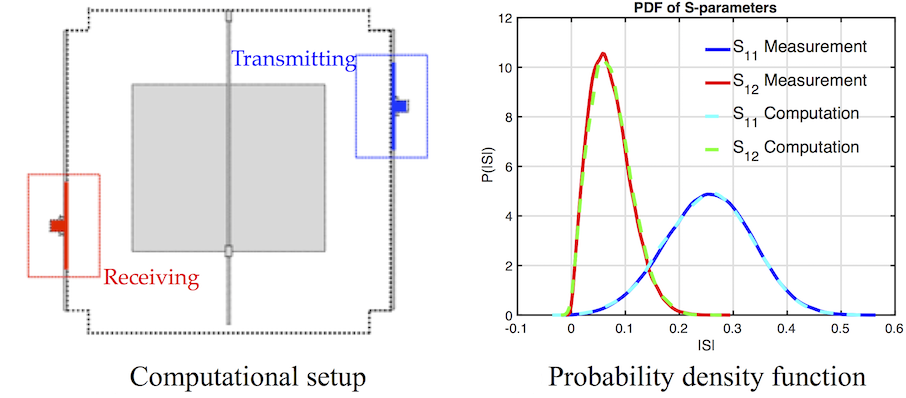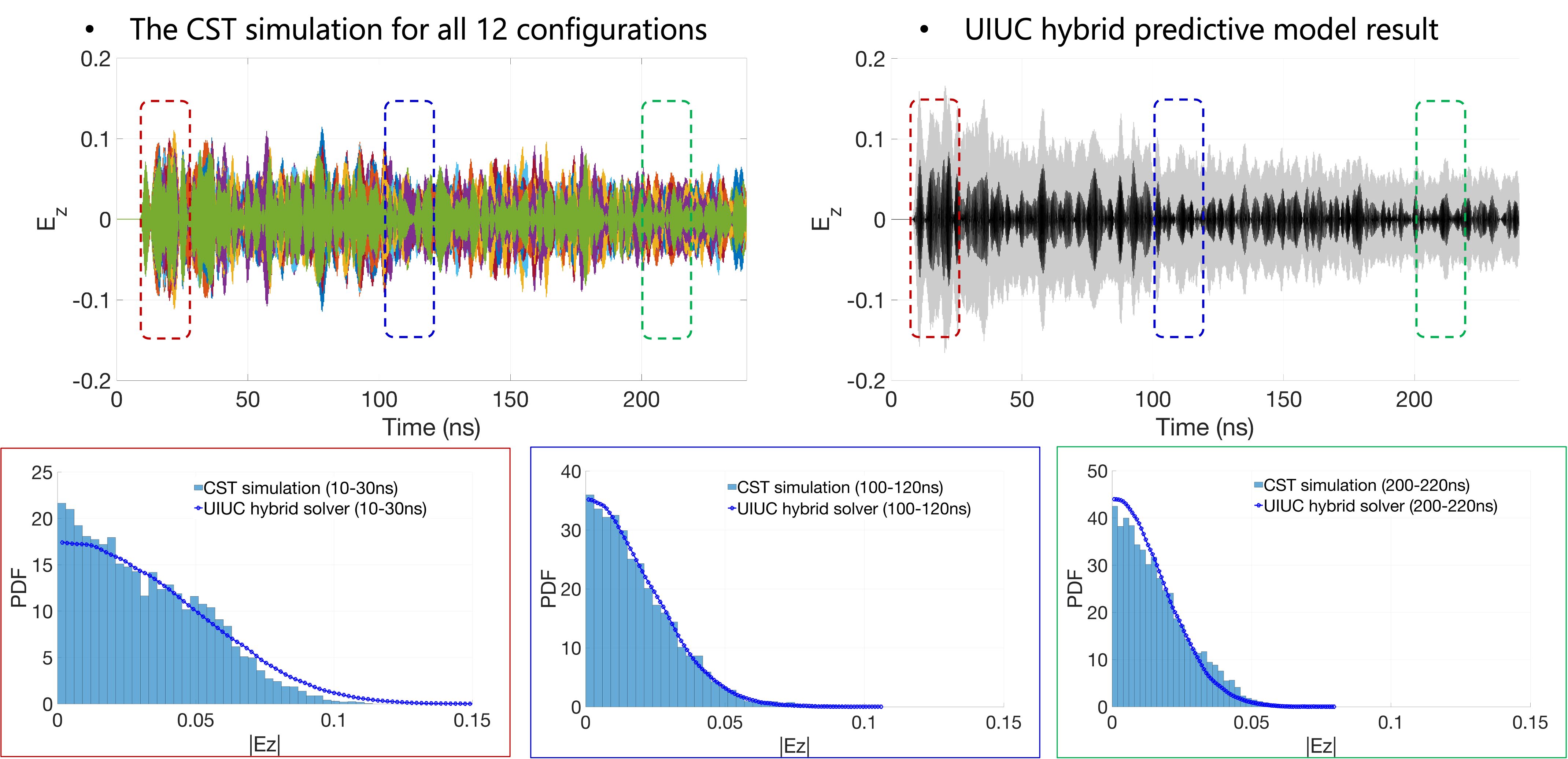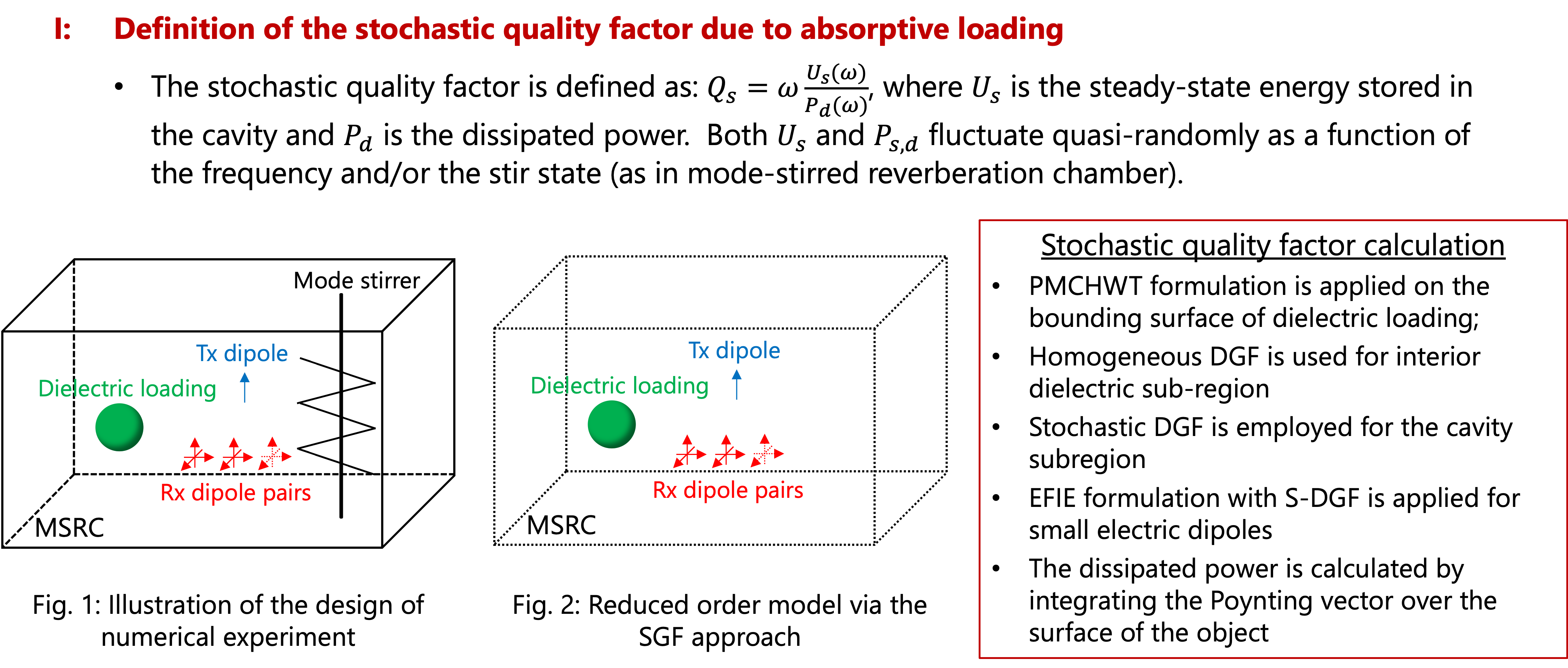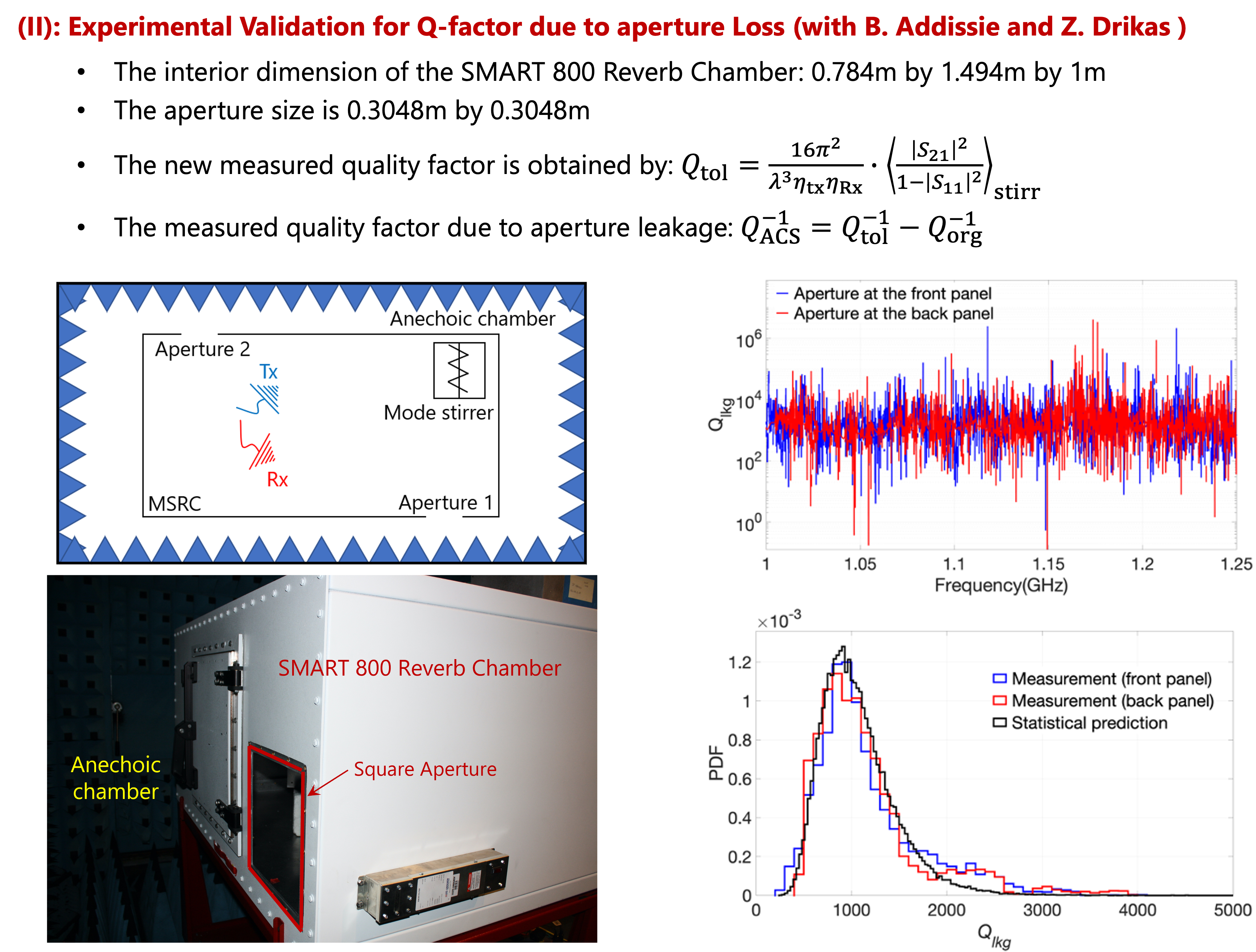Stochastic Wave Model Statistically Replicating Reverberation Chambers
The pervasiveness of smart cities and burgeoning Internet of Things (IoT) enable a more and more connected world. A key challenge emerging is the analysis, design, and deployment of electronic devices and systems in increasingly sophisticated electromagnetic (EM) environments. In the literature, the mode-stirred reverberation chamber (MSRC) has been used as a standard laboratory facility for the immunity, emission, and susceptibility of electronic components to complex random fields. The fundamental question answered in this work is: can we investigate fundamental computational algorithms to replicate complex multipath environments, such that the design and optimization of electronics can be performed in the resulting virtual experimental facility?
The main contributions of this work are twofold. Firstly, we investigate a vector dyadic stochastic Green’s function (SGF), which stands for the fundamental solution of wave equations in the wave-chaotic environment. A stochastic integral equation (SIE) formulation is developed next for the statistical characterization of wave interactions within wave-chaotic systems. Secondly, in order to incorporate component-specific characteristics, we investigate a hybrid deterministic and stochastic formulation. The electronic components are formulated in first- principles using finite element (FE) methods, and large complex environments are modeled statistically using the SIE with SGF.
The advancements establish an imperative simulation-driven, design-under-chaos (noise) capability. Virtual experiment, design, and optimization of electronics are performed under randomized, diffuse EM fields, beyond the confines of the laboratory MSRC and measurements.
In the following, we will discuss the application of the stochastic DGF approach to four well-known problems of interest: 1) EM radiation and emission in complicated enclosures, 2) stochastic EM field coupling to conducting wires with loads, 3) aperture coupling/excitation of large cavities from an external plane wave source, 4) Statistical Characterization of Cavity Quality Factor.
Application I: EM radiation and emission in complicated enclosures


Application II: Stochastic EM field coupling to conducting wires with loads
Wires and cables are routinely used in electronic systems to interconnect antennas, printed circuit boards, and electronic components. They often introduce additional coupling paths from external IEMI sources to sensitive circuitry inside computer enclosures. Thereby, it is important to study the mechanism of wire coupling and interference from the external RF sources.
We remark that as the stochastic Green’s function and integral equation methods are used to model the metal wire, both transmission line physics and high-frequency field coupling are modeled correctly. Furthermore, the proposed S-DGF rigorously integrates both the coherent propagation from apertures to conducting wires, and incoherent diffuse coupling due to multiple rays bounced from the cavity wall. Therefore, the statistical prediction of conducting wire pickup incorporates the relative location and orientation between apertures and wires, which is another unique aspect of the proposed work.

Application III: Aperture coupling/excitation of large cavities from an external plane wave source
In many practical electronic systems, the enclosure may be open to the outside with multiple apertures in the cavity wall. Given the incident external RF radiation, the size and shape of the aperture determine the amount of EM power coupled into the cavity. Therefore, it is important to quantitatively study the site-specific aperture excitation and coupling.


Application IV: Statistical Characterization of Cavity Quality Factor
The cavity quality factor (Q-factor) is a fundamental parameter in analyzing the field properties of confined electromagnetic (EM) environments. To analyze stochastic EM fields in large enclosures, there has been a strong interest in characterizing the cavity quality factor in terms of a probability density function (PDF).
Whereas previous work has focused on the Q-factor statistics for cavities with homogeneous, distributed losses (i.e. uniform dielectric loss and cavity wall loss), there has been little discussion of the statistical cavity Q-factor due to localized losses (e.g. aperture leakage, absorptive loading). In this work, we have solved this problem elegantly by using a newly developed stochastic Green’s function approach. The statistical predictions are validated by numerical simulations and experimental results.


